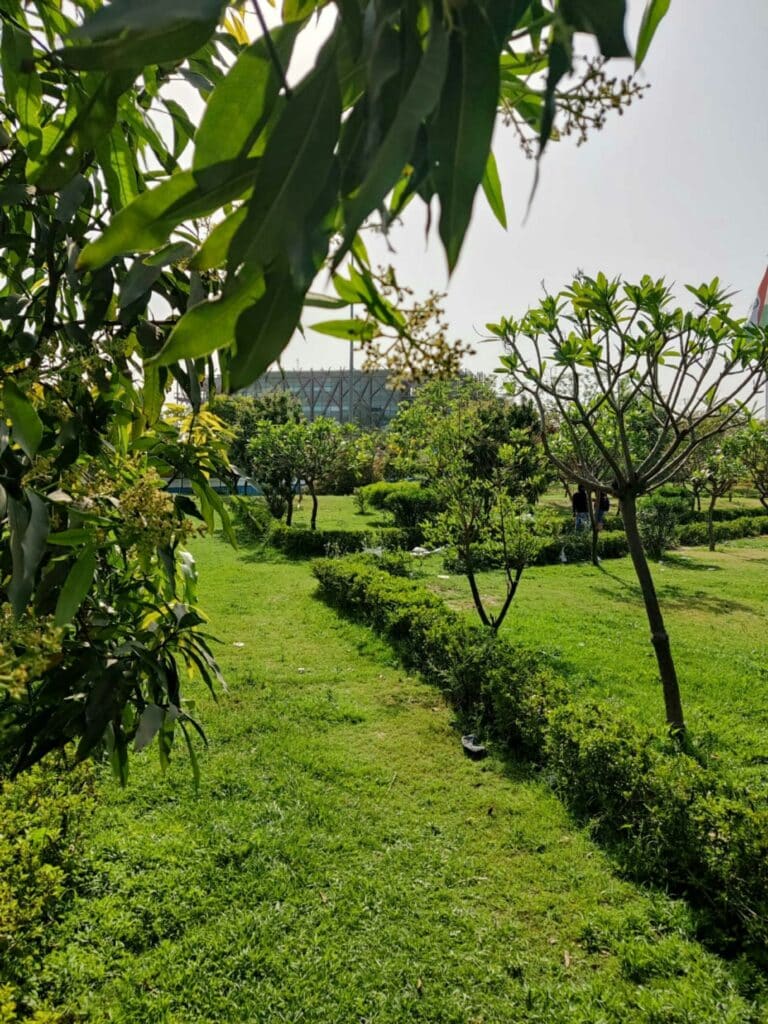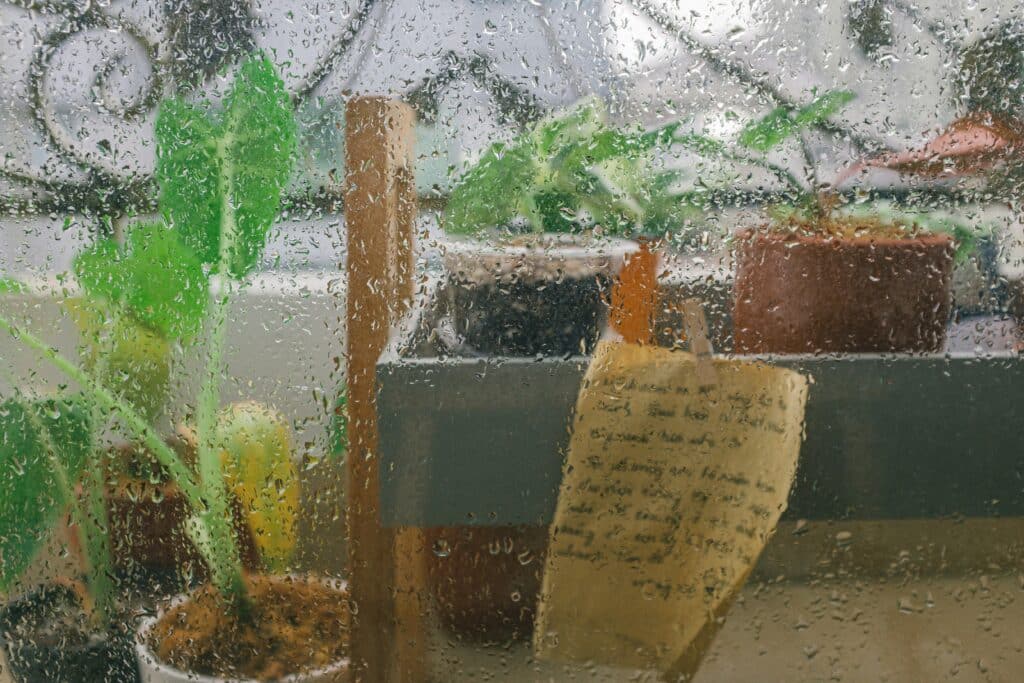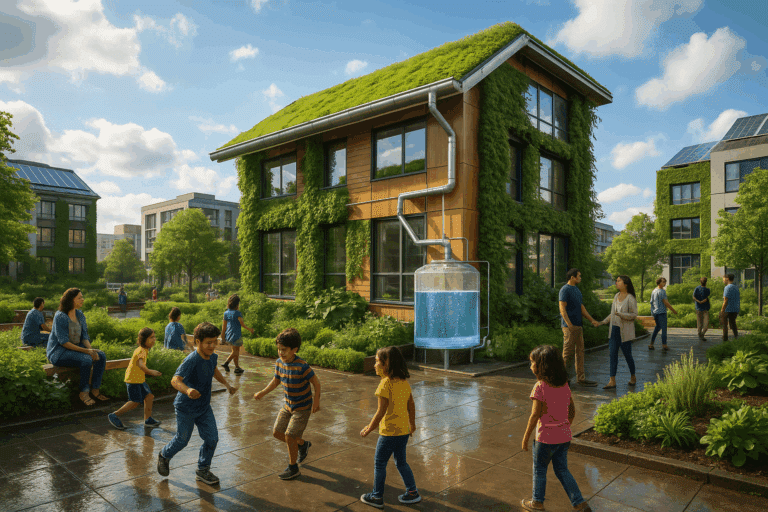The magic of green spaces, whether in a sprawling park or a cozy backyard, is undeniable. The gentle rustle of leaves, the sweet song of birds, the heady scent of blooming flowers – these are experiences that bring a sense of peace and tranquility. But have you ever considered the impact your green oasis might be having on the environment?

Green gardens not only add aesthetic appeal to our living spaces but also contribute to the wellbeing of our planet. But cultivating a garden that’s both beautiful and sustainable can be a challenge. It’s about more than just choosing the right plants; it’s about implementing strategies that conserve water, promote biodiversity, and reduce waste. 🌿🌼🌍
In the following sections, we’ll delve into the topic of “Green Gardens: Water-Saving Hacks and Eco-Friendly Designs for a Sustainable Oasis”. We’ll explore practical tips to save water, innovative eco-friendly design ideas, and the best plants to cultivate for a thriving, sustainable green space. Our aim is to help you create a garden that’s not just visually stunning, but also kind to our planet. 🏡💧🌱
Stay tuned to discover the secrets of sustainable gardening and learn how to transform your green spaces into an eco-friendly oasis. From the importance of water conservation to the use of native plants and the benefits of composting, we’re about to embark on a journey to a more sustainable future. Let’s get growing! 🌳🌼🌾
Understanding the Concept of Green Gardens
When we talk about green gardens, we’re not merely referring to spaces filled with verdant flora. In today’s context, ‘green’ signifies sustainability – creating and maintaining gardens that are in harmony with the environment and conscientious of water usage. The concept of green gardens revolves around the efficient utilization of natural resources, mainly water, and the incorporation of eco-friendly design elements.
The Importance of Water Conservation
Water conservation is a critical aspect of green gardens. With the accelerating threat of climate change and water scarcity, every drop of water saved is a boon to the environment. Green gardens aim to minimize water waste and promote conservation by implementing water-efficient gardening techniques.
Water-Saving Hacks for Green Gardens
In a green garden, water-saving is not just encouraged – it is essential. Here are some strategies to help reduce water consumption in your garden.
Employing Drip Irrigation
Drip irrigation is one of the most efficient and environmentally friendly methods of watering plants. Unlike traditional sprinklers, which can result in significant water loss through evaporation and runoff, drip irrigation delivers water slowly and directly to the root zone of plants. This ensures that moisture reaches where it is most needed—at the roots—while keeping foliage dry, which helps prevent fungal diseases.
Drip systems are highly customizable and can be tailored to suit gardens of all sizes, from small raised beds to large landscapes. They can be paired with automatic timers and moisture sensors to further enhance efficiency and prevent overwatering. Once installed, drip irrigation reduces water waste, lowers your water bills, and minimizes weed growth by limiting moisture to targeted areas.
Choosing Native and Drought-Tolerant Plants
Plant selection plays a crucial role in water conservation. Native plants are those that have evolved in a specific region and are naturally adapted to the local climate, soil, and rainfall patterns. These plants typically require less irrigation, fewer fertilizers, and minimal maintenance, making them ideal for sustainable gardening.
In addition to natives, incorporating drought-tolerant species—such as lavender, yarrow, sedum, and ornamental grasses—can dramatically reduce the need for watering. These plants have evolved mechanisms like deep root systems, waxy leaves, or low transpiration rates, allowing them to thrive in dry conditions. Grouping plants with similar water needs into hydrozones further enhances efficiency and helps avoid over- or under-watering.
Using Mulch
Mulching is an easy yet powerful technique for conserving water in the garden. A 2–4 inch layer of organic mulch—such as shredded bark, straw, wood chips, or compost—acts as a protective barrier over the soil. This layer helps to retain soil moisture by reducing evaporation, especially during hot and windy conditions.
Mulch also plays a key role in suppressing weeds, which would otherwise compete with your plants for water and nutrients. It regulates soil temperature, keeping roots cooler in summer and warmer in winter, and as organic mulch breaks down, it improves soil structure and fertility over time.
When combined, drip irrigation, native plant choices, and mulching create a comprehensive strategy for reducing water usage while supporting healthy, resilient, and beautiful green gardens.
Eco-Friendly Designs for Green Gardens
Designing a truly green garden requires thinking holistically about how each element—plants, structures, and systems—interacts with the environment. While water conservation is a key goal, eco-friendly garden design also emphasizes soil health, biodiversity, energy efficiency, and resource recycling. The result is a beautiful and functional space that not only supports your lifestyle but also contributes to the well-being of the local ecosystem.
An eco-friendly garden works in harmony with nature. This means selecting native and drought-resistant plants, using organic soil amendments, minimizing synthetic inputs, and making design choices that conserve natural resources and reduce ecological disruption. These practices help mitigate the impact of climate change, improve urban green space resilience, and encourage the presence of wildlife and pollinators.
Creating Rain Gardens

A rain garden is a shallow, planted depression that collects rainwater from rooftops, driveways, or other hard surfaces. Instead of letting this water flow into storm drains—carrying pollutants and eroding soil—rain gardens allow it to slowly soak into the ground, where it nourishes plants and recharges local groundwater supplies.
Rain gardens are typically planted with deep-rooted native grasses, flowers, and shrubs that tolerate both wet and dry conditions. Besides their ecological function, they are visually appealing and can be used as a centerpiece of the landscape.
In addition to reducing runoff, rain gardens help filter pollutants, cool the environment, and provide habitat for beneficial insects and birds. They also minimize the need for supplemental irrigation, especially in climates with distinct wet and dry seasons.
Incorporating Permeable Paving
Permeable paving is another essential feature of eco-friendly garden design. Traditional concrete and asphalt surfaces create impermeable barriers that accelerate stormwater runoff. In contrast, permeable paving systems—such as gravel, permeable pavers, grass pavers, or porous concrete—allow water to infiltrate into the ground, restoring the natural hydrological cycle.
These materials are ideal for pathways, patios, and driveways, offering both aesthetic appeal and environmental performance. They also reduce the risk of flooding, erosion, and water pollution, making them perfect for gardens in urban or flood-prone areas.
By integrating rain gardens and permeable paving, you can create a garden that is not only beautiful and functional, but also resilient, regenerative, and truly green.
Using Recycled Materials
Incorporating recycled materials into your garden design is an innovative and environmentally conscious way to add character while reducing your ecological footprint. Instead of discarding old or unused items, consider how they can be repurposed creatively to enhance your outdoor space.
For instance, reclaimed wood can be transformed into raised garden beds, trellises, or benches, adding a rustic charm while promoting sustainability. Recycled glass can be used in decorative paths or borders, catching the sunlight and adding visual intrigue. Even old bricks or concrete pieces can find new life as edging, steps, or retaining walls.
Upcycling not only saves money and resources but also tells a story—each item has a past and now contributes to a vibrant, growing future. Using salvaged materials fosters a circular mindset, encouraging gardeners to view waste not as a problem, but as potential.
Building a Sustainable Oasis
A truly sustainable garden does more than grow plants—it nurtures ecosystems, conserves resources, and provides refuge. By integrating thoughtful design choices, your green space can serve as a calming sanctuary for humans while actively supporting the environment.
To create this oasis, aim for a balance of form and function. Use native plants that require less water and maintenance. Incorporate permeable paths that absorb rainwater rather than causing runoff. Create seating areas surrounded by greenery, where you can relax, meditate, or observe the rhythm of nature.
A sustainable garden reflects the harmony between humans and the natural world—a place where eco-awareness and aesthetic beauty meet.
Installing Wildlife Features
Welcoming wildlife is essential to fostering a healthy, interconnected garden. Adding simple features can transform your space into a habitat for birds, pollinators, and small mammals.
- Bird feeders and birdbaths provide food and water year-round.
- Bug hotels support solitary bees, ladybugs, and other beneficial insects crucial for pollination and pest control.
- Hedgehog homes or log piles offer shelter for small creatures, enhancing biodiversity.
These features not only support local wildlife but also create opportunities for observation and connection, making your garden a true sanctuary for all living things.
Creating a Compost Heap
Building a compost heap is one of the most impactful steps you can take toward creating a zero-waste, eco-friendly garden. A well-managed compost pile allows you to recycle kitchen scraps, garden clippings, and yard waste, turning them into nutrient-rich humus that enhances soil fertility, improves moisture retention, and supports beneficial soil organisms.
To start a compost heap, select a shady, well-drained spot in your garden. Begin layering green materials (such as fruit peels, vegetable scraps, coffee grounds, and grass clippings) with brown materials (like dried leaves, shredded newspaper, straw, and small branches). The green materials supply nitrogen, while the browns provide carbon—both of which are necessary for balanced microbial activity.
Keep the pile moist but not soggy, and turn it regularly to aerate and speed up decomposition. Within a few months, you’ll have dark, crumbly compost ready to feed your garden beds, trees, or potted plants—no synthetic fertilizers needed.
Planting for Pollinators
Pollinators such as bees, butterflies, moths, beetles, and hummingbirds play a vital role in plant reproduction and ecosystem health. By intentionally planting flowers that attract and support these creatures, you create a thriving biodiversity hub right in your backyard.
Opt for native flowering plants, which are often better adapted to local pollinators than exotic species. Include a mix of shapes, sizes, and bloom times to provide nectar and pollen from early spring through late fall. Lavender, echinacea, milkweed, bee balm, and sunflowers are all popular, pollinator-friendly choices.
Avoid chemical pesticides, which can harm both pollinators and beneficial insects. Instead, focus on building a resilient garden that uses natural pest control methods and encourages beneficial predator species.
Adding features like a shallow water source (e.g., a birdbath with pebbles) or bee hotels can further support local insect populations, helping them nest, rest, and thrive.
Creating a Sustainable Garden Oasis
By combining composting, water-saving techniques, pollinator-friendly planting, and eco-conscious design, your garden becomes more than a collection of plants—it transforms into a living, sustainable ecosystem.
These efforts not only reduce your environmental impact but also enhance your garden’s beauty, functionality, and resilience. A garden that invites bees, reuses organic waste, conserves water, and nourishes the soil is one that grows in harmony with nature.
Ultimately, your green space becomes a sanctuary for wildlife and a source of joy for people, supporting both the planet and your personal well-being for years to come.
Conclusion
In conclusion, the “Green Gardens: Water-Saving Hacks and Eco-Friendly Designs for a Sustainable Oasis” provides valuable insights on how to create a beautiful and sustainable garden. It shows that an eco-friendly garden not only contributes to environmental preservation but also provides a space for relaxation and connection with nature. It demonstrates that with strategic planning, creative design, and smart water-saving techniques, one can transform any outdoor space into a sustainable oasis. The hacks and designs proposed in the guide go beyond aesthetic appeal. They underline a commitment to sustainability, promoting water conservation, biodiversity, and natural harmony. Therefore, adopting these eco-friendly practices can play a significant part in mitigating the effects of climate change. By implementing these sustainable gardening practices, we contribute to a more sustainable and greener future. Finally, the “Green Gardens” guide serves as a reminder that creating a sustainable oasis is a rewarding endeavor, providing a sanctuary for both the gardener and the environment. So, let’s embrace these green gardening practices and enjoy the rewards they bring. Together, we can make our world a greener and more sustainable place to live.



